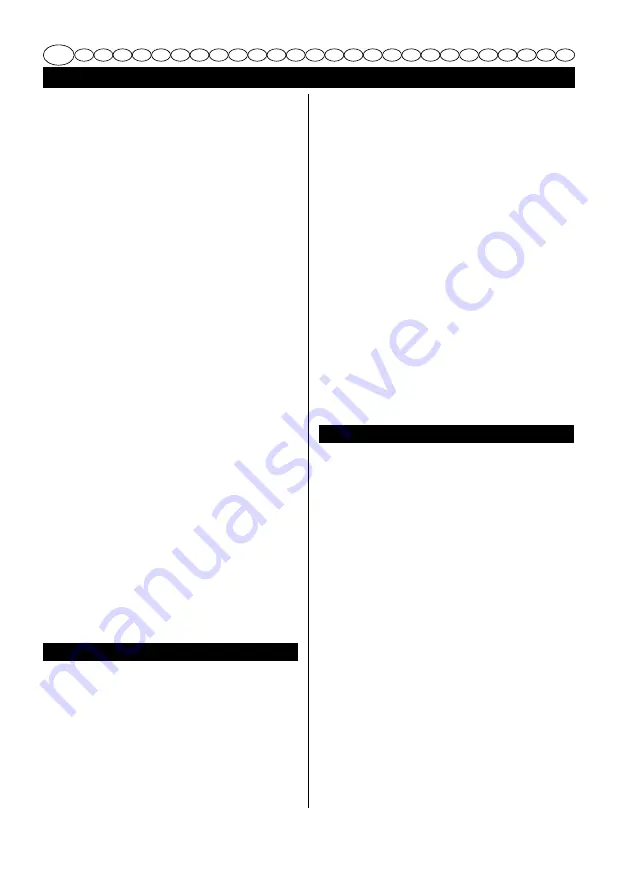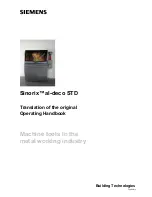
EN
DE ES IT FR PT NL RU FI SV NO DA PL CS SK SL HR HU RO BG EL AR TR HE LT LV ET
English (Original Instructions)
4
soft brush.
Note: To ensure optimum dust extraction, empty the
dust box assembly 5 in good time and clean the dust
box 11 at regular intervals.
When working vertical surfaces, hold the power tool
in such a manner that the dust box assembly 5 faces
downward.
External Dust Extraction (see figure H-J)
Pull the dust box assembly 5 off toward the bottom
with a twisting motion.
Mount a vacuum hose 15 onto the extraction outlet 14.
Connect the vacuum hose 15 with a vacuum cleaner.
An overview for the connection of various vacuum
cleaners can be found at the end of these instructions.
The vacuum cleaner must be suitable for the material
being worked.
When vacuuming dry dust that is especially detrimental
to health or carcinogenic, use a special vacuum
cleaner.
When working vertical surfaces, hold the power tool in
such a manner that the vacuum hose faces downward.
Auxiliary Handle (see figure K)
The auxiliary handle 7 enables convenient handling
and optimal distribution of power, especially at high
removal rates. For sanding close to edges, the
auxiliary handle can be removed. Unscrew wing nut
17 and pull screw 16 out of the housing. Now, pull off
the auxiliary handle 7 toward the front. To remount
the auxiliary handle 7, slide it from the front onto the
housing in such a manner that the studs of the handle
engage into the recesses of the housing. Firmly tighten
the auxiliary handle with the screw 16 and the wing nut
17.
Setting the Auxiliary Handle (see figure L)
The auxiliary handle can be set to three positions. To
change the position, loosen the wing nut 17 (approx.
2 – 3 turns). Set the auxiliary handle and retighten the
wing nut.
STARTING OPERATION
Inserting the battery
Slide the charged battery 4 into the power tool from
behind until the battery is securely locked.
Switching On and Off
To start the machine, turn on the On/Off switch 2
forward so that the “1” is indicated on the switch.
To switch off the machine, turn off the On/Off switch
2 toward the rear so that the “0” is indicated on the
switch.
To save energy, only switch the power tool on when
using it.
Preselecting the Orbital Stroke Rate
With the thumbwheel for preselection of the orbital
stroke rate 1, you can preselect the required orbital
stroke rate, even during operation.
1 – 2
Low stroke rate
3 – 4
Medium stroke rate
5 – 6
High stroke rate
The required stroke rate depends on the material and
the working conditions and can be determined through
practical testing.
After longer periods of working at low stroke rate, allow
the machine to cool down by running it for approx. 3
minutes at maximum stroke rate with no load.
Restarting Protection
The restarting protection feature prevents uncontrolled
restarting of the machine after an interruption in the
power supply.
To restart the operation, switch the On/Off switch 2 to
the Off position and start the machine again.
WORKING ADVICE
■
Before any work on the power tool, remove the battery.
■
Wait until the machine has come to a standstill before
placing it down.
Sanding Surfaces
Switch the machine on, place it with the complete
sanding surface on the surface to be worked and
move the machine with moderate pressure over the
workpiece.
The removal capacity and the sanding pattern are
mainly determined by the selection of the sanding
sheet, the preselected orbital stroke rate and the
applied pressure.
Only flawless sanding sheets achieve good sanding
capacity and extend the service life of the machine.
Pay attention to apply uniform sanding pressure; this
increases the working life of the sanding sheets.
Intensifiying the sanding pressure does not lead to an
increase of the sanding capacity, but to increased wear
of the machine and the sanding sheet.
A sanding sheet that has been used for metal should
not be used for other materials.
Use only original sanding accessories.
Rough Sanding
Attach a sanding sheet with coarse grain.
































